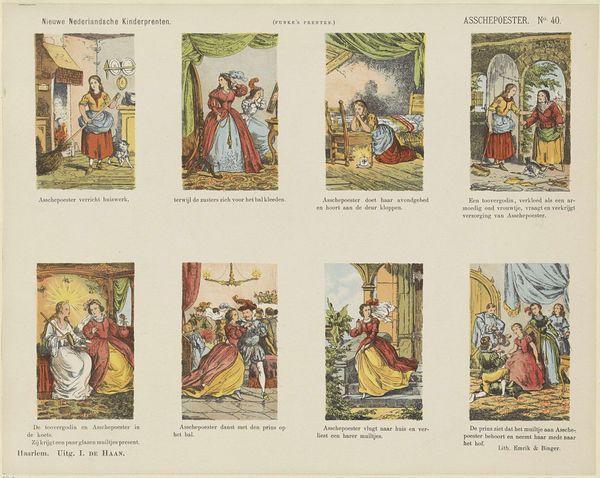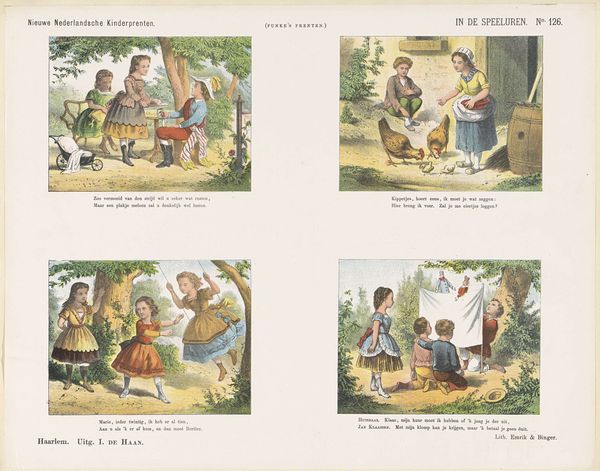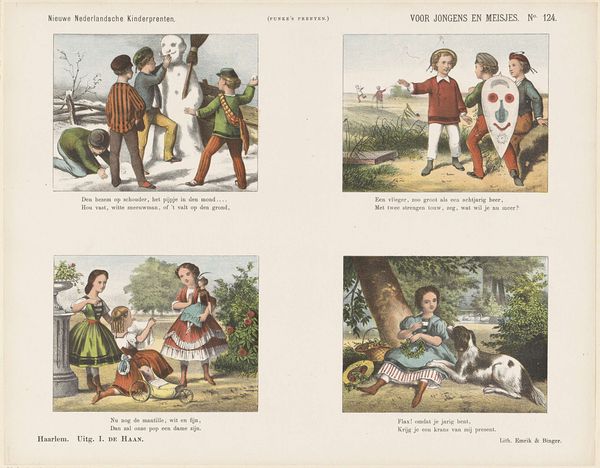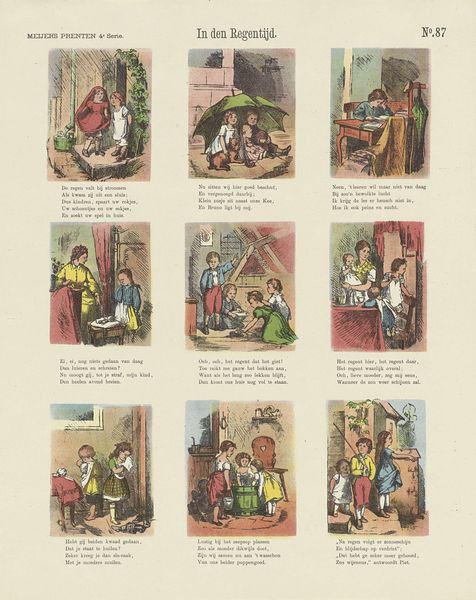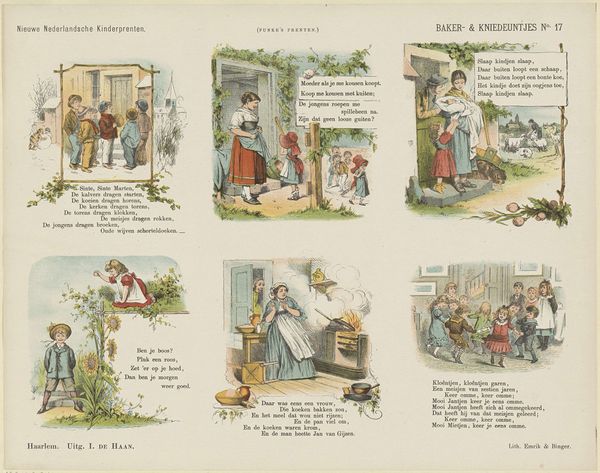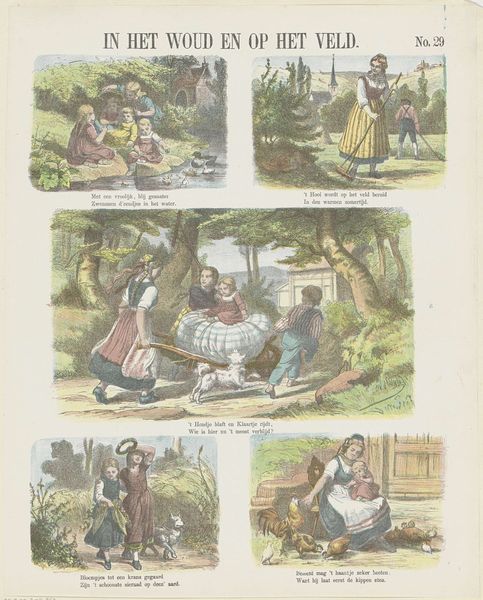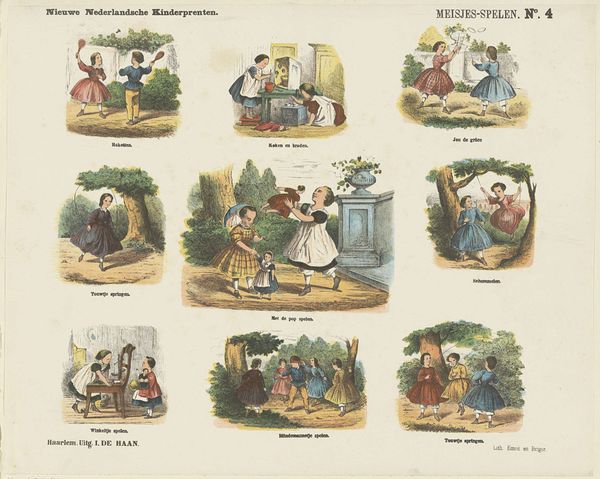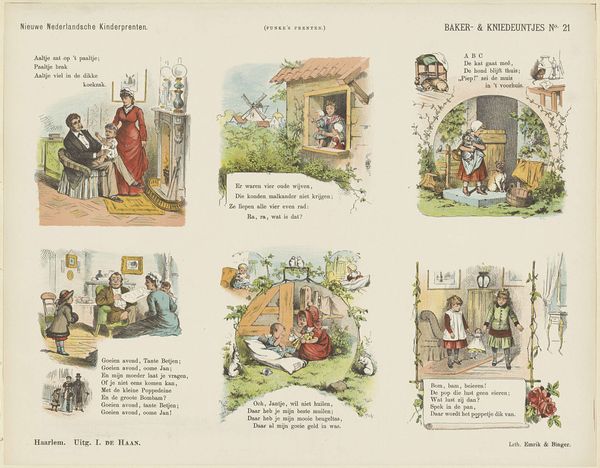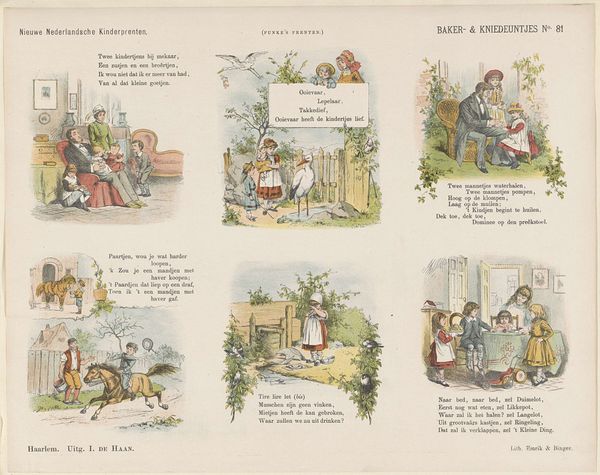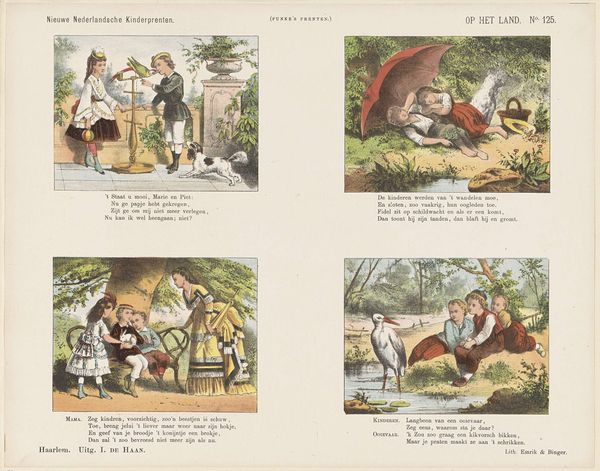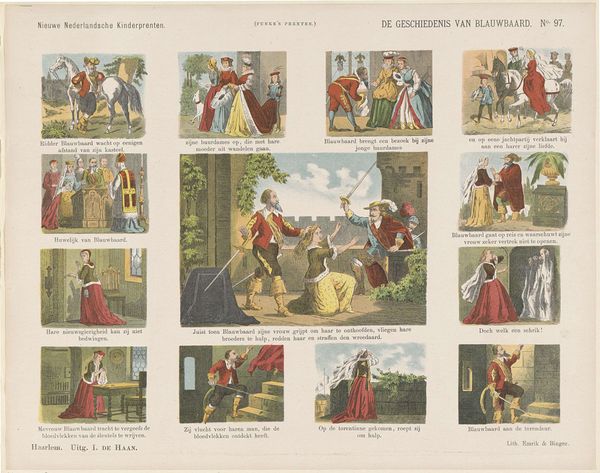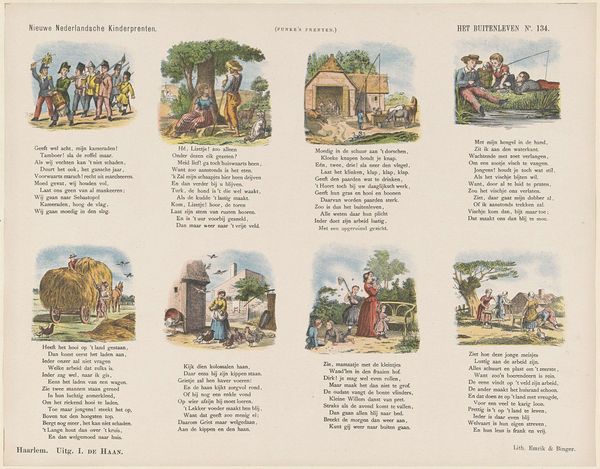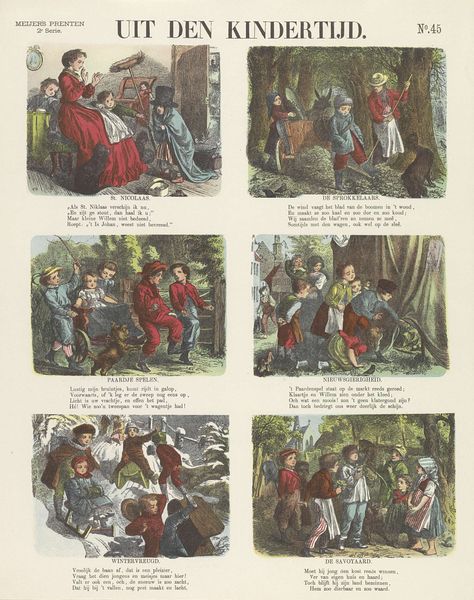
print, watercolor
#
narrative-art
#
dutch-golden-age
# print
#
watercolor
#
child
#
folk-art
#
watercolour illustration
#
genre-painting
#
watercolor
Dimensions: height 345 mm, width 444 mm
Copyright: Rijks Museum: Open Domain
Curator: This brightly colored print, dating roughly from 1875 to 1903, is titled "Belooning en vermaning" which translates to "Reward and Admonition." It's a watercolor piece created by Jan de Haan, showcasing scenes from daily life. My first thought is, it feels very saccharine and moralizing! A glimpse into childhood that perhaps papers over the realities of labor. Editor: Yes, that moralizing tone is definitely there. I immediately keyed into the visual hierarchy here; the mother figure dominates most of the panels. Think about it: She is central, positioned indoors, reading, offering instruction and rewards. The composition speaks volumes about gender roles and the expectations placed on women as educators and moral guides in that era. Curator: Absolutely, and the materiality reinforces that! This being a print intended for children's consumption – mass-produced, relatively inexpensive. Its availability would shape the cultural landscape, influencing how children perceived these roles. The ease of its dissemination via printed lithography by Emrik and Binger highlights industrial methods' growing role. Editor: Exactly! The scenes themselves—children listening to their mother read, an elderly man giving treats, and even the little rhyme beneath each panel, speak to social conditioning, doesn't it? Obedience brings rewards, disobedience risks parental involvement. It reinforces power structures, parental authority, and children's need to conform. Curator: I’m intrigued by the goat. It shows work animals playing a part even for children, rewarding them with rides for obedient behaviour. But this all exists alongside the industrial processes behind this very print. What does it do to blur lines of social class between consumer children and producing class workers? Editor: Well, perhaps the romanticized portrayal obscures the more challenging realities for many families at that time, focusing instead on idealized childhood experiences which would certainly not apply to many families at this time. Think about children involved in industrial labor! This romantic image reinforces that societal inequality. It acts as a form of visual propaganda, perhaps, designed to naturalize certain social hierarchies and relations. Curator: It becomes clear how something as simple as a children’s print can reveal larger systems at play, influencing attitudes about family dynamics. Editor: It certainly reveals how these supposedly innocent depictions of childhood operate within complex networks of power and privilege.
Comments
No comments
Be the first to comment and join the conversation on the ultimate creative platform.
